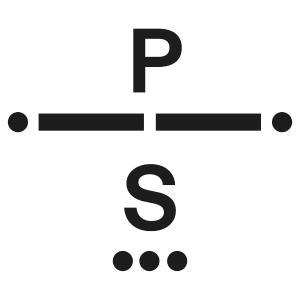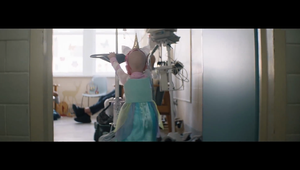
PIRATE SOUND's Zoë Stoll on Music’s 'Magic Trick'

We've all seen those clever YouTube videos where the music in a popular movie trailer gets swapped for a completely different genre. Suddenly, a bubbly '90s rom-com turns into a tense psychological thriller all because of a change in music style.
Zoë Stoll, music supervisor at PIRATE SOUND, understands the critical role music plays in subconsciously altering how visuals are perceived. Here, we get to know her and the importance of her role in elevating content through music.
LBB> Firstly, tell us, what is a music supervisor?
Zoë> Broadly, a music supervisor oversees all music related elements on a production, whether that be commercial, film, TV or games. As you’d expect, the job can vary a lot depending on the project, but it’s always pretty multifaceted. It ranges from digging through catalogues finding the perfect track, to negotiating and securing the rights for its use.
LBB> What does a typical day look like for you in your role?
Zoë> We work on such a diverse mix of projects at PIRATE SOUND, so my days are also equally varied. Music searches are the backbone of my role, so I spend a lot of time searching for potential tracks and listening through music catalogues. Depending on the day, I may also be liaising with our in-house composers, meeting with clients, or attending film playback sessions.
It’s incredibly valuable to be part of the PIRATE SOUND ecosystem where all aspects of audio are being considered. Introducing music as part of a holistic approach allows things to synergise more organically and the end result is a cut above, compared to when every element is done in isolation. Plus, there is so much audio expertise here, so inspiration is always flying between departments.
LBB> What impact do you think music plays, whether it be for advertising, film, or other mediums?
Zoë> It cannot be overstated. Music brings a whole other dimension to the visuals, as well as a host of socially and culturally embedded signals – personal and collective associations that are attached to particular tracks or genres. It’s incredible how influential the music choice is on the tone, emotion and meaning of a piece. It’s like a magic trick – swap the song and you get a totally different story.
LBB> In your opinion, what makes a great music brief?
Zoë> More than anything it’s important to have a sense of what we are trying to achieve with the music, regardless of what our route is. In fact, it can be beneficial to have the space for a little stylistic experimentation – this gives us the chance to play with different approaches and potentially stumble upon something unexpectedly brilliant. The problem-solving element is definitely one of the most satisfying parts of this process, but ideally it helps to have some idea of where we’re trying to get to.
LBB> What are trends you’re seeing both in the general music space and more specifically in the briefs you’re receiving from clients?
Zoë> More broadly, it’s exciting to see a growing sense of eclecticism and genre fluidity in emerging artists. Sync has always played a part in the exposure of music, but I think that’s now in overdrive with how rapidly sounds can be disseminated. Platforms like TikTok are playing a big role in diversifying the music that people are exposed to day-to-day. There are still clearly huge strides needed in making new models of music consumption equitable, but the way it’s being filtered down is interesting for sure.
Music briefs have definitely been shaped by the turbulence of the last few years, and in turn by the creative risks clients feel comfortable taking. For a while there was a strong appetite for the comfort and familiarity of heritage tracks, or music that delivers emotional poignancy. That is still very present, but we’re starting to see the re-emergence of a sense of lightness and playfulness in briefs. We’ve worked on a few projects that embrace this through humour and kitsch, which is a lot of fun to work on. It feels like a much-needed response to the heaviness of recent times.
LBB> Can you educate us non-music folk on the difference between licensing the master for a popular track vs. getting the publishing rights?
Zoë> Absolutely! Publishing rights essentially means the song rights i.e. the written music and lyrics. Master rights are the rights to a particular recording of a song. If you are looking to use a well known track for a project, regardless of what it is, you need a licence agreement for both of these. Depending on the track, there may be multiple writers, and therefore multiple publishers all with a segment of the publishing. Similarly, with the master rights, if there are multiple artists or say a featured artist, you would have to get approvals from all parties through their respective label, if they have one. There are some exceptions, such as songs that are in the public domain.
LBB> Finally, can you share a list of your favourite commercials that have licensed tracks on them? Why are these your top picks from your perspective and expertise?
Zoë> This is tough! As a recent British import, some of my favourite commercial syncs are from the UK, and the first that made an impression and showed me the power commercial soundtracks can have. I think there was something of a golden age of sync during the late 90s and early 2000’s, with really adventurous and interesting music choices.
Guinness had some brilliant examples from this era. I love Leftfield’s ‘Phat Planet’ on their iconic commercial ‘The Surfer’ from 1999, it’s such a radical choice and a masterclass in the ‘less is more’ approach and the power of silence. This could have been scored, but the energy and atmosphere achieved through the grit of this track elevated it to something totally different. Achieving a sense of ‘cool’ through a track is so difficult, many commercials try and fail, but I think this one does it so effortlessly.
I’m clearly a Jonathan Glazer fan, and another directed by him with beautiful music is ‘Ice Skating Priests’ for Stella Artois in 2005, which uses Liszt’s Hungarian Rhapsody No.2 in C-Sharp Minor for Solo Piano. This choice transforms the piece into a silent movie complete with dramatic swells, pauses and comedic passages, yet it retains enough space for all the nuances in the picture and story to come through. Again another bold yet incredibly effective creative choice.
At PIRATE SOUND we worked on the soundtrack for last year’s PC Insiders Report, with a new interpretation of ‘Pure Imagination’ from Willy Wonka & The Chocolate Factory. Working with a well-known and well-loved track is a delicate process. When done well it can add a lot of emotional depth. But you have to remain sensitive to the essence of the song, as it has a lot of sentimental attachment for the audience. Our arrangement brought a sense of wonder and delight, without being saccharine or twee.













